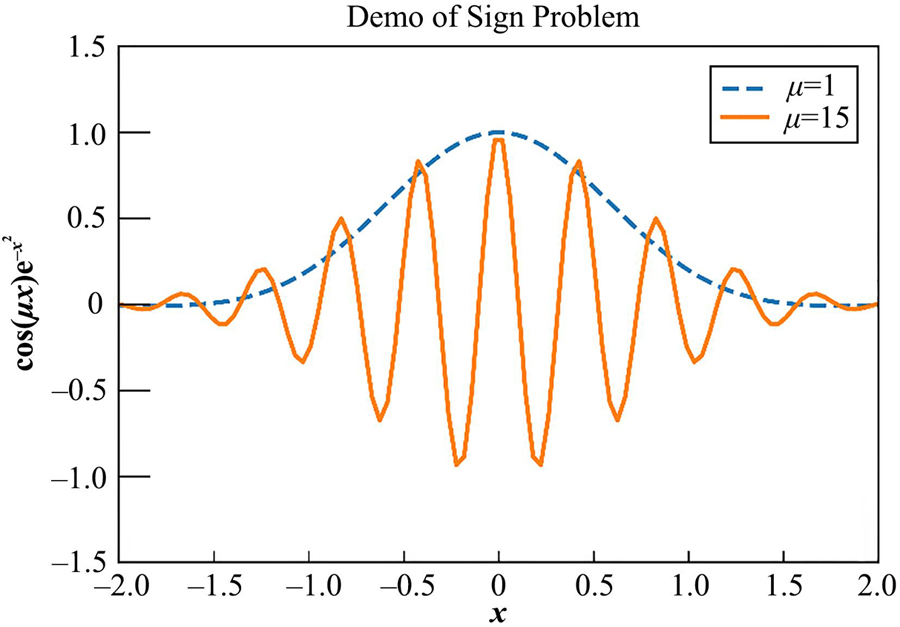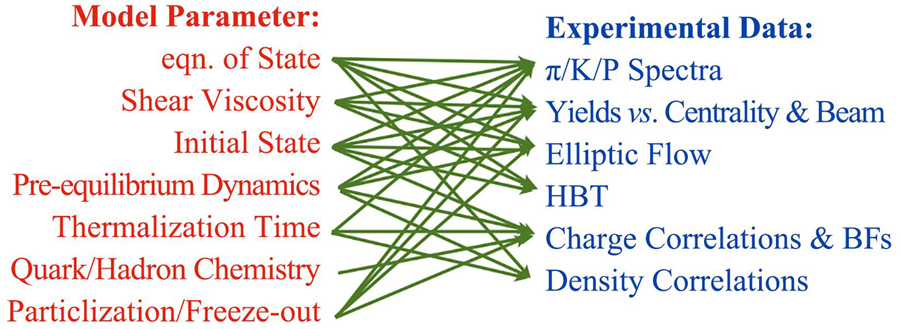Fupeng LI, Longgang PANG, Xinnian WANG. Application of machine learning to the study of QCD transition in heavy ion collisions[J]. NUCLEAR TECHNIQUES, 2023, 46(4): 040014
Search by keywords or author
- NUCLEAR TECHNIQUES
- Vol. 46, Issue 4, 040014 (2023)
![Demonstration of difficulty encountered when extracting the nuclear equation of state (EoS) through model-data comparison in heavy-ion collisions[4]](/richHtml/hjs/2023/46/4/040014/040014-F001.jpg)
Fig. 1. Demonstration of difficulty encountered when extracting the nuclear equation of state (EoS) through model-data comparison in heavy-ion collisions[4]

Fig. 2. Demonstration of the sign problem in lattice QCD
Fig. 3. Extraction of nuclear EoS at a high temperature and zero baryon chemical potential region using Bayesian analysis[19]
Fig. 4. A single layer artificial neural network transforms the input data by a linear matrix operation z=xW+b, in combination with a non-linear operation on each element of the output z using a non-linear activation function
Fig. 5. Identification of the nuclear EoS and types of phase transition from the final state particle spectra using deep convolutional neural network[24]
Fig. 6. Identification of the nuclear EoS from the final state particle cloud in momentum space using point cloud neural network[28]
Fig. 7. Search for self-similarity in momentum space using dynamical edge convolution network and identification of correlated particles[39]
Fig. 8. Framework of the deep neural network when constructing three temperature-dependent mass functions and calculating the QCD EoS using DNN learned masses[42]
Fig. 9. Flow chart illustrating active learning[43]
Fig. 10. Classification of nuclear liquid gas phase transition using an auto encoder, which learns from the experimental data of heavy-ion collisions[46]
Fig. 12. Deep learning assisted jet tomography used to locate the initial jet production positions and aid in searching the Mach cone in nuclear liquid[58]
Fig. 13. Flow chart illustrating active learning[61]
|
Table 1. Comparison between the performances of dynamical edge convolution network and point cloud network when searching for critical phenomenon

Set citation alerts for the article
Please enter your email address



